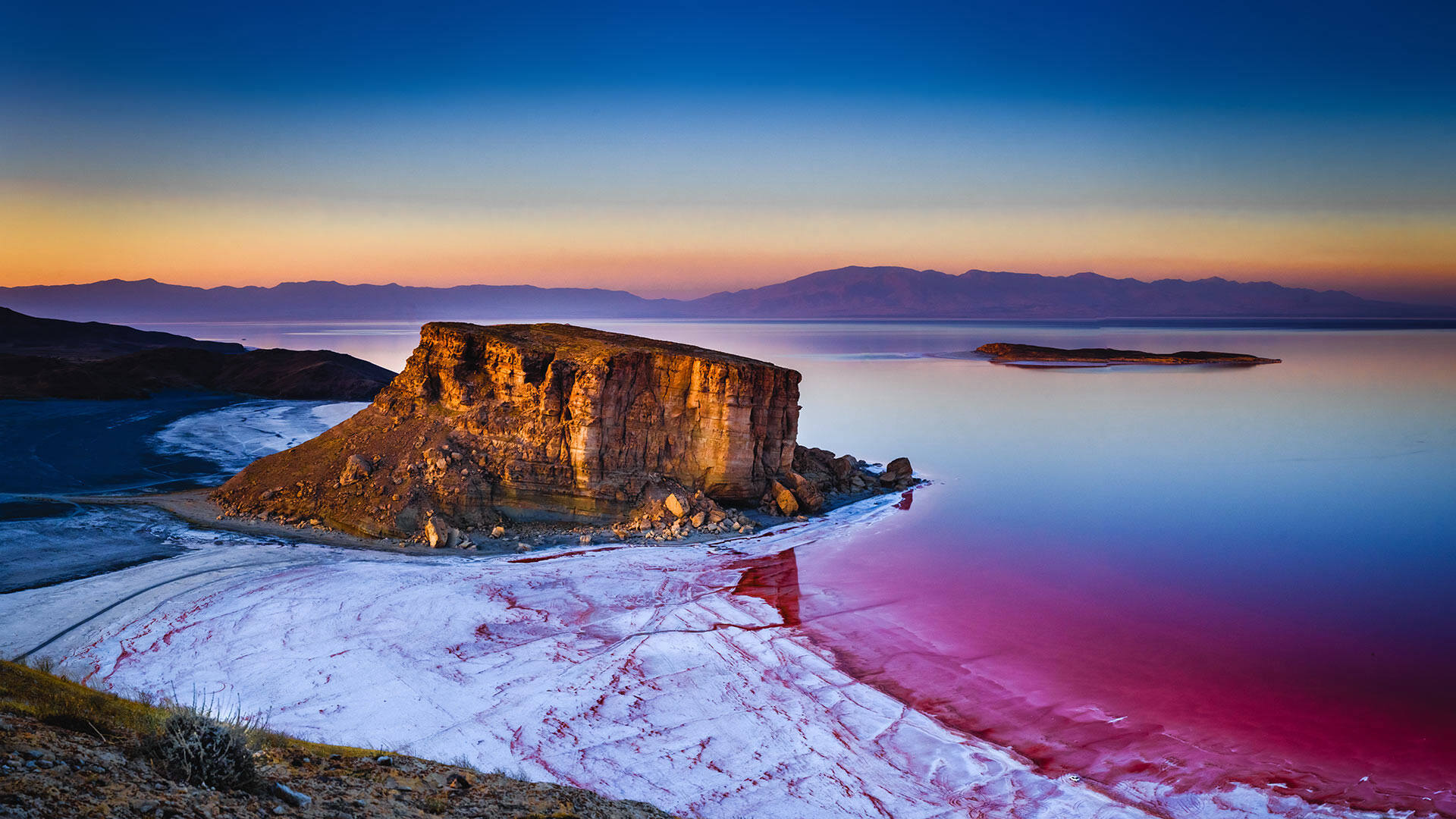
Lake Urmia is a truly remarkable natural wonder that captivates the imagination with its breathtaking beauty and intriguing history. Situated in Northwestern Iran, this saline lake has fascinated scientists and travelers alike for centuries. Spanning an impressive surface area of 5,200 square kilometers, Lake Urmia is also one of the largest saltwater lakes in the world.
But its size is not the only fascinating aspect of Lake Urmia. This article will delve into eight astonishing facts that showcase the uniqueness and allure of this extraordinary lake. From its vibrant pink color to its vital role as a habitat for diverse flora and fauna, Lake Urmia is an ecological treasure trove that continues to leave visitors in awe. So, let’s dive into these fascinating facts and discover the wonders that await at Lake Urmia.
Key Takeaways:
- Lake Urmia is a mesmerizing saltwater lake in Iran, known for its pink waters and diverse wildlife, despite facing environmental challenges. Efforts are underway to restore its ecosystem and attract tourists.
- With a history spanning over 5 million years, Lake Urmia holds great historical significance and has been designated as a UNESCO Biosphere Reserve. Efforts are being made to address its environmental challenges and revitalize the region.
The Saltwater Lake
Lake Urmia, located in northwestern Iran, is renowned for its unique characteristic as a saltwater lake. It is the largest lake in the Middle East and the second-largest saltwater lake in the world, covering an area of approximately 5,200 square kilometers. The high salt concentration of the lake imparts a mesmerizing pink color to its waters, creating a stunning visual spectacle.
Ancient Origins
With a history spanning over 5 million years, Lake Urmia is considered one of the oldest lakes on Earth. It is believed to have formed during the Pliocene epoch and has since served as a vital ecosystem supporting various flora and fauna unique to the region.
Diverse Wildlife
Despite its high salinity levels, Lake Urmia is home to a diverse range of wildlife. The lake acts as an important breeding ground for numerous bird species, including flamingos, pelicans, and other migratory birds. It also provides a habitat for several endemic species, such as the Urmia catfish and the Urmia newt.
Environmental Challenges
Over the years, Lake Urmia has faced significant environmental challenges, resulting in a drastic reduction in its water level and an increase in salinity. Factors such as climate change, excessive damming of rivers, and agricultural practices have contributed to this ecological crisis. Efforts are underway to address these issues and restore the lake’s ecosystem.
Tourist Attraction
Despite its environmental issues, Lake Urmia continues to attract tourists from around the world. Its unique pink hue, mesmerizing landscapes, and therapeutic mud baths make it an appealing destination for nature lovers and those seeking unconventional travel experiences.
Revitalization Efforts
In recent years, extensive revitalization efforts have been initiated to restore Lake Urmia to its former glory. The government and various organizations are implementing measures to address the lake’s water shortage, including diverting water from nearby rivers and promoting sustainable agricultural practices in the region.
Historical Significance
Lake Urmia holds great historical significance, with numerous ancient civilizations having flourished in its vicinity. The lake has witnessed the rise and fall of empires, providing a rich archaeological treasure trove that attracts researchers and history enthusiasts.
UNESCO Biosphere Reserve
In recognition of its ecological importance, Lake Urmia and its surrounding wetlands were designated as a UNESCO Biosphere Reserve in This designation aims to preserve and protect the unique biodiversity of the region and promote sustainable development practices.
Conclusion
Lake Urmia is truly a remarkable natural wonder. From its stunning turquoise color to its rich biodiversity, it never ceases to amaze. Its diminishing size and environmental challenges, however, serve as a reminder of the importance of conservation efforts to protect our planet’s precious resources. As visitors and stewards of the Earth, it is our responsibility to appreciate and preserve the beauty of Lake Urmia for future generations to experience and enjoy.
FAQs
1. What causes the vibrant turquoise color of Lake Urmia?
The unique color of Lake Urmia is attributed to the presence of certain algae and minerals in its water, including calcium carbonate and salts.
2. Why is the water level of Lake Urmia decreasing?
The water level of Lake Urmia has been decreasing due to a combination of factors, including climate change, water extraction for agricultural purposes, and the construction of dams on its tributaries.
3. What is the significance of Lake Urmia’s biodiversity?
Lake Urmia is home to a diverse range of plant and animal species, many of which are endemic to the region. Its biodiversity plays a crucial role in maintaining the ecological balance of the area.
4. Are there any conservation efforts taking place to save Lake Urmia?
Yes, there are ongoing conservation efforts to restore and protect Lake Urmia. These efforts include the implementation of water management strategies, reforestation projects, and raising awareness about the importance of preserving this valuable ecosystem.
5. Can visitors engage in recreational activities at Lake Urmia?
Due to the shrinking size of the lake, some recreational activities that were once available may be limited. However, visitors can still enjoy activities such as birdwatching, exploring the surrounding wetlands, and taking in the natural beauty of the area.
6. Is it safe to swim in Lake Urmia?
While swimming in Lake Urmia was once a popular activity, the decreasing water level and increasing salinity have made it less suitable for swimming. It is advisable to check with local authorities for the latest information on safety.
7. How can individuals contribute to the preservation of Lake Urmia?
Individuals can contribute to the preservation of Lake Urmia by practicing responsible water usage, supporting conservation organizations and initiatives, and spreading awareness about the importance of preserving this unique ecosystem.
8. Can I visit Lake Urmia throughout the year?
Yes, Lake Urmia can be visited throughout the year. However, the best time to visit is during the spring and summer months when the weather is pleasant and the surrounding landscapes are vibrant.
Lake Urmia's captivating beauty and ecological significance have left you spellbound, but there's more to explore in this region. Delving deeper into the rich tapestry of Orumiyeh's history and culture promises an enlightening journey. From ancient ruins that whisper tales of bygone eras to vibrant traditions that continue to thrive, Orumiyeh beckons curious minds. Embark on a virtual expedition through the city's streets, where every corner holds a new revelation. Unravel the mysteries of this enchanting destination and let your wanderlust guide you to even more incredible discoveries.
Was this page helpful?
Our commitment to delivering trustworthy and engaging content is at the heart of what we do. Each fact on our site is contributed by real users like you, bringing a wealth of diverse insights and information. To ensure the highest standards of accuracy and reliability, our dedicated editors meticulously review each submission. This process guarantees that the facts we share are not only fascinating but also credible. Trust in our commitment to quality and authenticity as you explore and learn with us.


